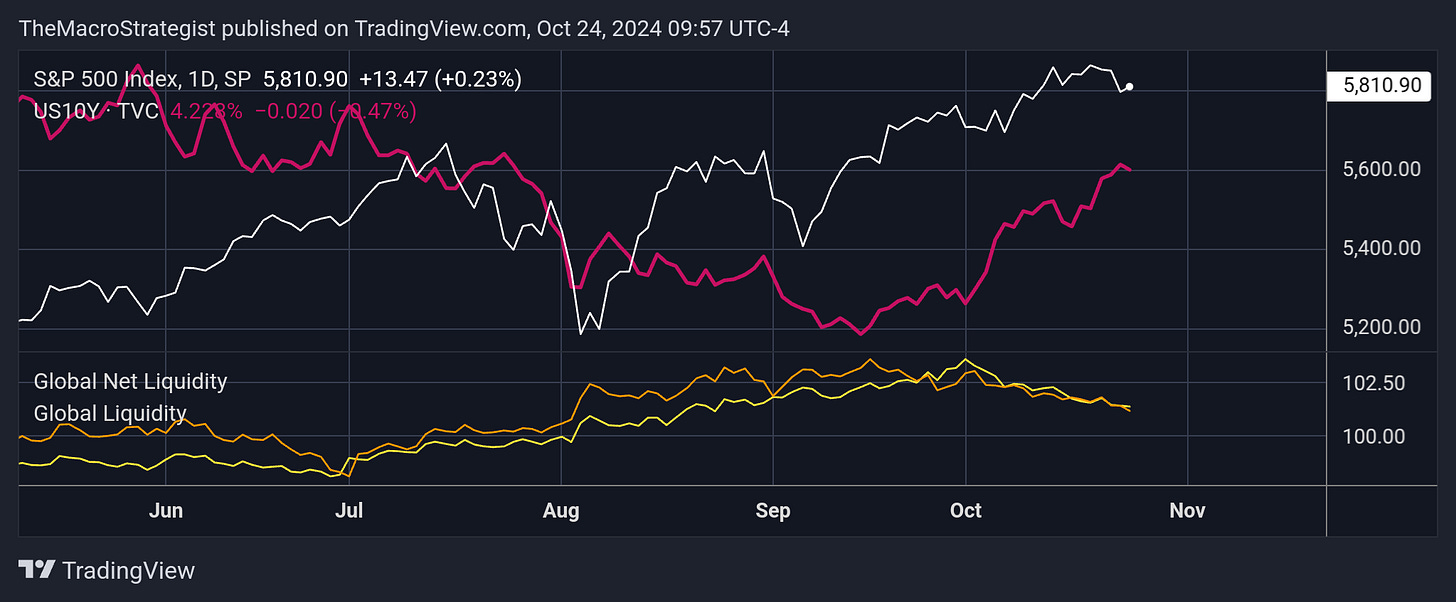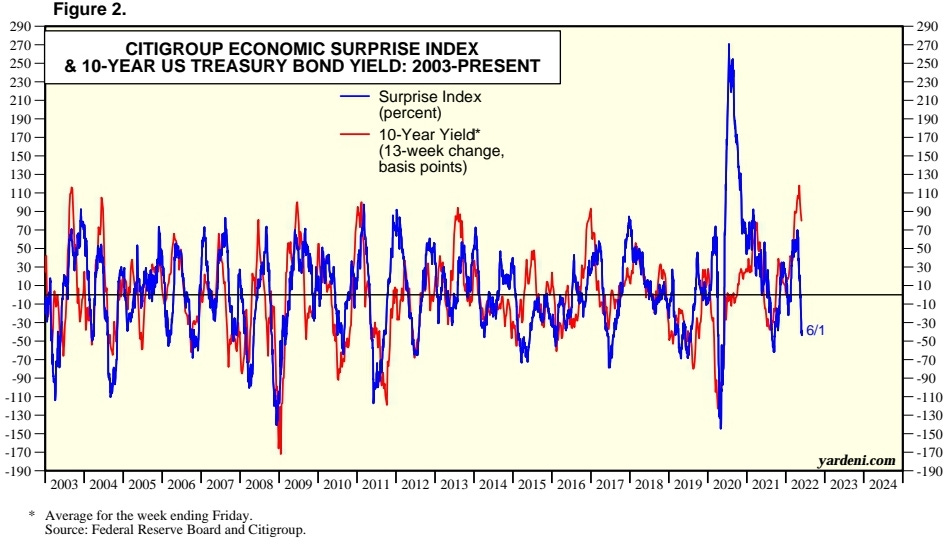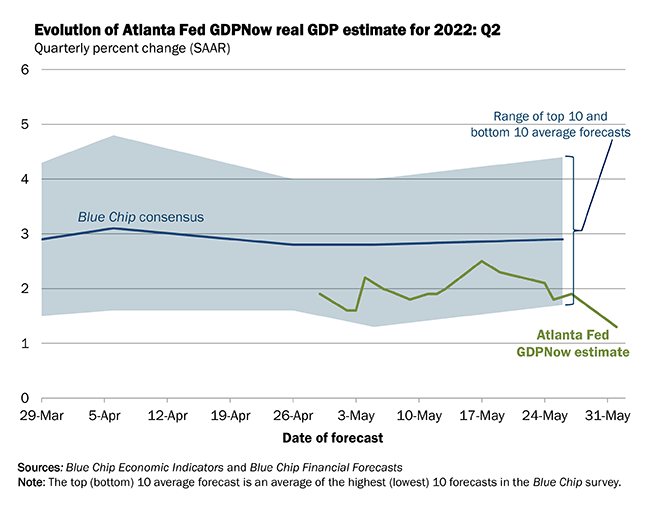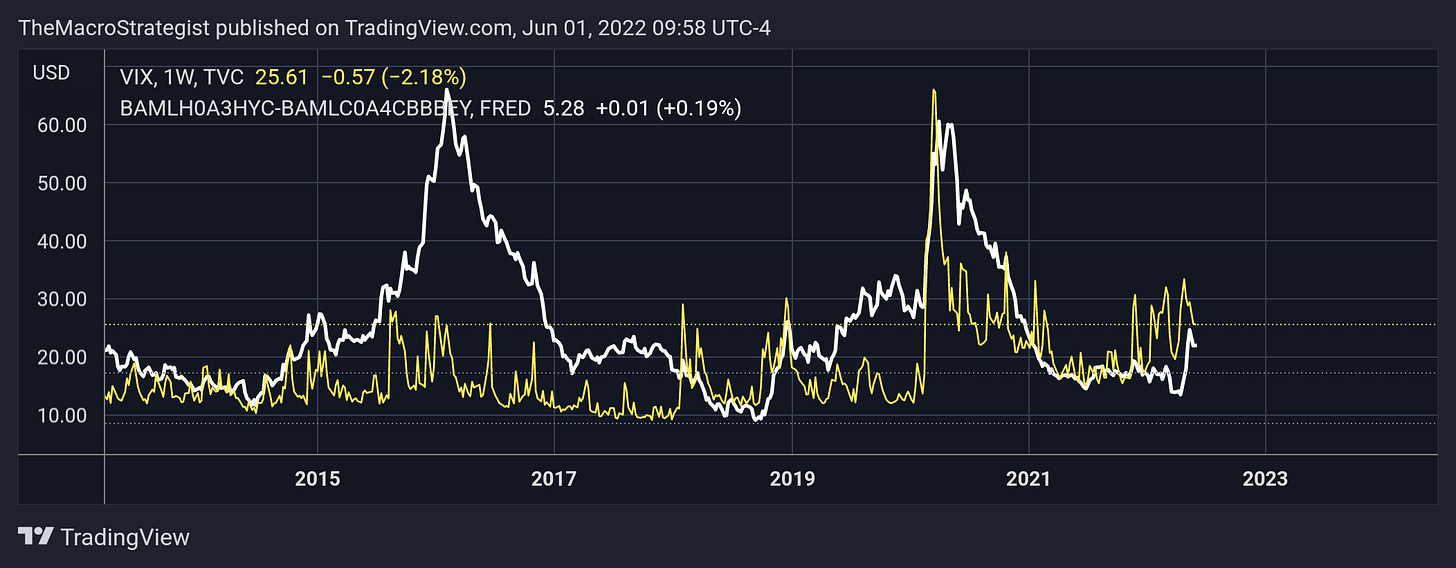[FLASHBACK] Ghosts of 2018 Haunt With QT Looming.
With QT ongoing in the background, stress is mounting. Are the ghosts lurking?
The reduction in the Fed's balance sheet seemed to disappear from everyone's mindset, especially now that the Fed began its cutting cycle (still not bullish).
Nevertheless, the balance is contracting by 11.3% - the lowest since 2018. This is coincidentally when the Fed was undergoing quantitative tightening (QT).

For those new to the game, in Q3-18 and early Q4-18, yields began to spike dramatically as liquidity began to dry up. Equities, being the laggard, peaked in November. The move was swift and nasty.
The CNBC “Markets In Turmoil” specials were near daily. High-yield credit inssuance stopped for 45 days which forced Powell to turn about face in the infamous “Powell Pivot.”
I've written several recent notes on the state of liquidity and its repercussions, so please check those out.
Here is a price I wrote outlining the 2018 QT fiasco to usher in Powell’s new 2022 tightening cycle. Oddly enough, a year later we began to have bank failures.
Ghosts of 2018 Haunt With QT Looming
Quantitative tightening (QT) unofficially started yesterday but does not go into effect June 15th as the first round of asset purchases mature and roll off the Fed's balance sheet.
The Ghosts of 2018 haunt Fed Chair Jay Powell, who will now oversee both the 2018 and current round of QT. As many of you know, Q4-18 was one to remember as a blood bath is risk assets commenced.
Effectively, with the combination of interest rate hikes and balance sheet reduction, the Fed drove financial conditions sharply higher in 2018 causing credit issuance to freeze in Q4-18. The junk debt market froze for over 40 days, and this led to the famous “Powell Pivot” in December 2018; and Powell went from hawkish to dovish on a dime.
The backdrop is similar in some sense, but different in others. Similarly, there was a reflation push globally with risk assets, commodities and yields pushing higher as the Fed embarked on their tightening cycle. Financial conditions and real yields were low, and the monetary tightening gently pushed those higher.
However, unlike 2018, we’re not coming off the back of a global synchronized recovery. In some sense, the world rebounded, uniquely, from a post-pandemic slowdown, but much of the growth was led by simply allowing everyone return to everyday activities with sporadic injections of fiscal support.
Moreover, China is not climbing out of a recession but likely in one now. Europe is not far behind, and the economic data for the U.S. is quickly decelerating - as I said it would.
The Citi Economic Surprise Index, which measures economic data versus consensus estimates is now sharply negative (i.e. data is worse than forecasts).
This is supportive of the advanced Q1-22 GDP print of -1.5% and the ever-declining Atlanta Fed GDPNow nowcast of 1.3%, down 32% week-over-week.
Notice the blue chip consensus. Nobody is expecting a another negative quarter.
So, Powell is tightening monetary policy into a global economic slowdown. This is a key distinction.
Yesterday, the Bank of Canada (BoC) hiked their key benchmark rate by 50 bps to 150 bps. When the BoC hikes rates, they hike rates on Canada. When the Federal Reserve hikes rates, they hike on the entire world as the de facto global central bank.
Before I get into more detail, what is quantitative easing (QE)?
Customer deposits enter the commercial banking system, and the bank can either lend the deposits out or buy interest baring securities, such as treasuries, mortgage-backed securities (MBS), or, potentially, high-yield securities.
The Fed creates bank reserves (not legal tender) and swap those treasuries or MBS securities for bank reserves on the bank's balance sheet.
This is what the laymen refer to when they say “The Fed prints money,” and they would be incorrect. Bank reserves are not money, cannot be spent and is merely an accounting placeholder.
The idea behind this is that with a bank's balance sheet “freed up” it would then go out into the real economy and lend to consumers (that’s the actual money printing).
The Fed facilitates but does not print money. That actually matters.
Over the last year, banks have increased their lending and reduced their purchasing of interest baring securities. Because banks are flush with deposits, whatever is not lent out or used to purchase securities is then parked at the Fed using the reverse-repurchase program (RRP).
This is like a synthetic monetary tightening because excess desposit are taking out of the banking system and parked at the Fed in exchange for treasuries, and this is how bank’s fund themselves and their interest-baring accounts.
Quantitative tightening (QT) is set up differently than in 2018. First, instead of directly selling the treasuries and MBS off their balance sheet, the Fed will allow maturing securities to simply mature and roll off the balance sheet.
The aim is to not overwhelm the financial markets as many of these securities on the balance sheet were purchased years ago and are “off the run” with little demand or liquidity.
As these securities mature and roll off, the Treasury will pay the Fed face value of the Treasury bond or MBS, and that money will go back into the banking system as customer deposits.
The monthly cap is set at $47.5B per month (versus $50B per month in 2018), but then will increase to a cap of $90B per month in September.
This is why whispers of a Fed pause (ceasing hiking rates for time being) by Atlanta Fed Bank President Bostic in September or late second-half were murmured.
Why? Each month of QT equates to a 25 bps hike on the funds rate. In September, it’ll be as if the funds rate increases 50 bps per month.
That is to say that regardless of whether the Fed continues to hike rates, QT will be a de facto tightening and push financial conditions higher.
In “So Long 2021! What’s Poppin’ In Q1-22,” I wrote that the Fed will perfer to utilize QT over rate hikes. The funds rate is virtually meaningless but followed by everyone. It’s a communication tool, nothing more.
Financial conditions and yields began moving higher in December before the Fed even begain to hike. If needed, the Fed could pause hiking and give the impression of pausing tightening while allowing QT to pushing financial conditions higher in the background.
The following exclusive charts and commentary on QT, credit and bonds are for Macro Strategist Pro members. Sign up for 25% off now!
Calming overall volatility down means calming the weakest parts of credit down. The pull back in the CCC/BBB spread will calm equity markets near-term vis-a-vis a lower MOVE index.
What will be a concern for Powell is that the spread remains elevated and off the post-pandemic lows within a higher equity and fixed income vol regime.
We can also see how low both the spread and the VIX were heading into Q3-18 month after the first QT program begain.
While the initial three months of QT will be $47.5B v $50B in 2018, markets are pricing in, and the Fed Osprey are backing up, 50 bps hikes for at least the next two FOMC meetings.
If they do as the market suggests, the funds rate would stand at 183 bps (currently 83 bps). Consensus terminal rate is between 3-350 bps while I think we’ll begin to see increasing stress between 2-225 bps.
For comparsion, the funds rate topped out at 242 bps in Q2-19.

I focus on these two segments because they are the most at risk during monetary tightening. If there's no demand for junk debt (CCC & lower) issuance, or if junk rated companies cannot get financed, the broader credit market is beginning to stress. Junk debt is the canary in the credit coal mine.
(This can be traded via the iShares iBoxx $ High Yield Corporate Bond ETF $HYG).
Next, the lowest rung of investment grade debt (BBB) is at risk of being downgrade to junk. If these companies cannot service and roll over their debt, we’re at risk for a massive downgrade cycle.
(This can be traded via iShares iBoxx $ Investment Grade Corporate Bond ETF $LQD).
What’s perverse is that “investment grade” $LQD holds almost 50% of it's total weighting in BBB rated debt as the “hunt for yield” causes portfolio managers to reach to risker tranches.
This could be at even more risk than HYG.
I use real yields as a proxy for financial conditions as markets are forced to reprice risk.
I warned about junk debt and rising real yields before it became mainstream in “Damn, Too Much Junk In The Trunk.”
Real yields have paused as Treasuries have come off there recent bottoms, but that’s likely short lived.
I don't think bonds will catch a sustainable bid until real yields stagnate as we’ve seen with previous monetary policy inflections.
Bonds will likely see another final flush as QT commences. As deposits are sent from the Treasury to the Fed then commercial banks, banks will initial park it in the RRP, pushing it up to $2.5-2.8 trillion.
As lending begins to dry up as a domestic recession embarks, the excess despoits will go back into purchasing high-quality liquid assets (HQLA), including treasuries.
With the Treasury issuing less debt this year, and increasing rate of Treasury repo fails, high quality collateral and assets will be in demand and in short supply.

As I’ve previously written, I believe we’ll begint o see an inflow into bonds, particularly long duration $TLT, once the 5 Year Yield/5y5y Forward Inflation Breakeven begins to roll over. It tends to stall just before real yields and a leading indicator to Fed policy shifts.
Here are a few other articles to check out!
The Macro Brief: Inflation Eats The Consumer As Saving Rate Continues To Drop
The Macro Brief: Collateral Shortfall Will Cause A “Buy At Any Cost” Moment
The Macro Brief: Shanghai Scapegoat Covers China’s Distress
The Macro Brief: Japanese Treasury Flows Signaling Eurodollar Trouble
The Macro Brief: The U.S. Economy Is In “Permanent Impairment”: EPB Research











